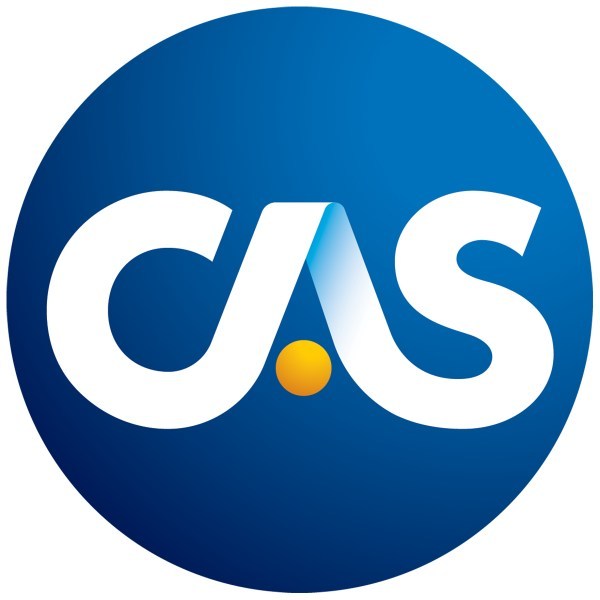Last week, during the group’s annual meeting in Las Vegas, the Casualty Actuarial Society’s board put an end to plans that would have merged the organization with its life insurance counterpart, the Society of Actuaries.
 Outgoing President Brian Brown first announced the board’s decision in a letter to members, and incoming President James Christie hosted a town hall meeting to deliver the news and hear feedback from attendees.
Outgoing President Brian Brown first announced the board’s decision in a letter to members, and incoming President James Christie hosted a town hall meeting to deliver the news and hear feedback from attendees.
“Following lengthy deliberations, the board did not approve resolutions to move forward with the combination proposal,” Brown’s Nov. 12 letter said. In a second letter signed by Christie and SOA President Jim Glickman, published on the CAS website for members this past Monday, the two men jointly announced to their members that the CAS board did not actually vote the proposal down. Instead, the vote “did not achieve the necessary two-thirds majority support required for the proposal to move to a member vote,” prompting the SOA board to acknowledge that the combination could not move ahead, they wrote.
Brown’s letter, which was also publicly posted on the CAS website, said that while not moving forward with a full combination, “the board remains committed to pursuing collaboration with the SOA in areas of common interest.”
“The shared journey to explore a combination has revealed many more similarities than differences between the two organizations and has strengthened our relationship,” he wrote.
In a late-September announcement published prior to the end of his tenure as president, Brown had pointed members in the direction of a website—StrongerAsOne.net—explaining reasons that the two societies were exploring a combination, including benefits like a unified education system and a stronger global brand.
Above all, Brown wrote: “We also face competitive challenges from other professions related to data science that seek to benefit from…opportunities” for actuaries to impact business and societal issues—opportunities created by predictive analytics and technology.
“The CAS and SOA boards of directors recognize that changes will continue and that we need to lead—not react—to maintain our competitive edge, embrace new opportunities, and better serve our current and future members,” he wrote in the letter, which has now been removed from the CAS website.
All the information at the StrongerAsOne.net URL is gone as well—an action that prompted a question from at least one CAS member attending the town hall meeting via a computer livestream. “In the same vein as some [have] expressed regarding how suddenly this combination proposal was revealed to the general membership, I’m wondering if the sudden removal of the StrongerAsOne.net website is repeating the same mistake,” the member wrote in a comment posted beneath the livestream.
At the time of the September announcement unveiling the potential combination, Brown noted that many hurdles had to be jumped in order for a deal to be struck, including a formal presentation of the combination agreement in early October, votes by both boards by mid-November and member votes from both organizations in early 2019.
While the CAS never proceeded to a vote of the full membership, the group did conduct a survey in which some 3,000 members took part, according to information revealed at the town hall meeting last week. Asked to give a rundown of the survey results, Christie revealed that 45 percent of CAS members were strongly opposed, 33 percent favored the merger, 17 percent were undecided and a few wanted more information (presenting number from his memory on the spot). He prefaced the disclosure, however, noting that “many of the members didn’t have complete insight into what was going on,” relying mainly on information that was presented on the FAQ section of the StrongerAsOne.net site.
“Would it be accurate to say that the board and the CAS membership were not on the same page in regard to whether this proposal should be accepted?” a member watching a livestream of the town hall event asked.
“We were in the same book,” Christie responded, noting that on both sides—the CAS and SOA side—members who have started to spend time working together are finding common ground. “I would say that for the vast majority of our membership, they don’t work on a day-to-day basis with members of the other society, and they were further away from the concept of the collective vision,” he stated.
Still, a young associate of the CAS expressed confusion over the combination being proposed at all, recalling some bad blood between the two group about five years ago when the SOA proposed a casualty credential for SOA members.
A Canadian actuary attending the session noted that the U.S. situation of having a separate P/C and life actuarial society is actually an exception to the state of affairs throughout the rest of the world where the two groups are united.
In their letter on Monday, CAS President Christie and SOA President Glickman said that both still want “to build on the spirit of collaboration established throughout the development of the combination proposal by working together on mutually beneficial initiatives for the betterment of our shared profession and its future.”
A member at the town hall asked Christie whether the two groups might reconsider a combination at some time in the future, noting that many members—including Brown and Christie—had moved from initially being very skeptical to understanding some of the benefits of the proposed combination in recent weeks.
Christie said the new board is not likely to consider this again in its first year. “It’s not to say that a board five years down the road might not see that there’s a different environment we’re working in,” he said, acknowledging that external pressures had prompted the proposal in the first place. “Those external pressures aren’t going away,” he said.
In fact, earlier during the town hall, Christie alluded to a timing issue as one reason the CAS board decided not to move ahead with a combination now. Asked to discuss the board’s primary consideration in making its decision, Christie said, “While we tried to articulate some significant external pressures that were on the profession, there is no burning platform right now. Both organizations are growing…For a lot of membership, it would seem to be a ‘why now’ [question] as opposed to ‘why not in five years time,'” he said.
Also cognizant of what they heard from members in recent weeks, and aware of perceptions of cultural differences between the organizations, he added: “At the end of the day, the board made a decision that it was not time to go forward.”
Separately, on Nov. 6, the International Society of Catastrophe Managers (ISCM), a professional association promoting catastrophe management professionalism within the insurance industry, and The CAS Institute (iCAS), a subsidiary of the CAS offering specialty credentials to professionals, announced the launch of a new education and credentialing program for catastrophe risk professionals.





















 AIG Partners With Amwins, Blackstone to Launch Lloyd’s Syndicate Using Palantir
AIG Partners With Amwins, Blackstone to Launch Lloyd’s Syndicate Using Palantir  Artificial Intelligence Is Rewriting the Rules for Commercial Lines
Artificial Intelligence Is Rewriting the Rules for Commercial Lines  Aon Adds to List of Brokers Suing Howden US for Alleged Poaching, Theft
Aon Adds to List of Brokers Suing Howden US for Alleged Poaching, Theft  Legal Finance and Insurance: From Confusion to Collaboration
Legal Finance and Insurance: From Confusion to Collaboration 



